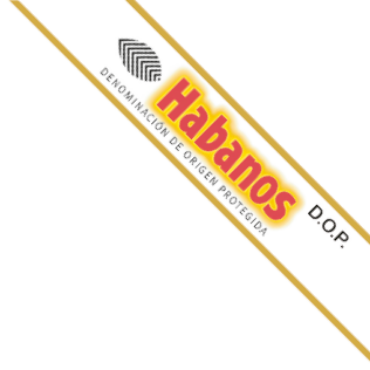Shade Grown Tabaco
Shade-grown leaf for wrappers
The processing of the tobacco leaves used to make a Habano differs according to their method of cultivation and their final function in the cigar. Below is a brief description of the processes used for the leaves that are destined to become wrappers.
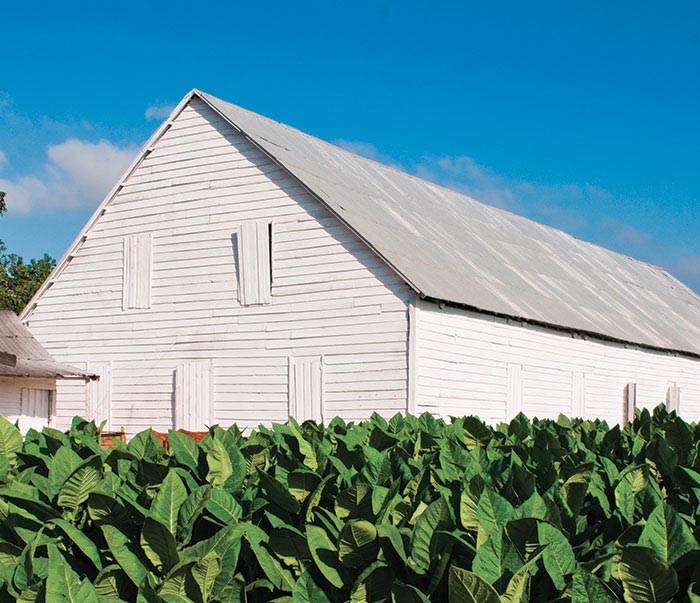
Air curing wrappers
The first process for the newly harvested wrapper leaf, on which the success of the whole crop depends, is a slow and careful period of air curing which removes moisture and turns the leaf by stages from bright green to golden brown.
1. Air Curing in the traditional manner
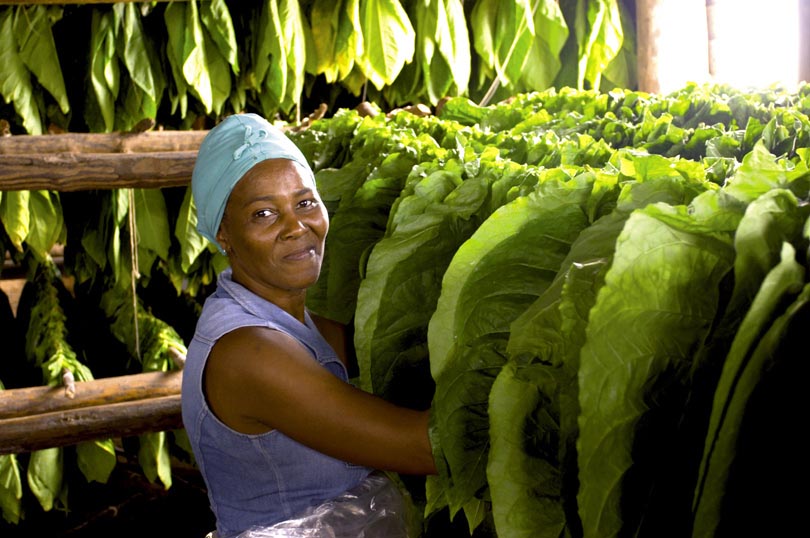
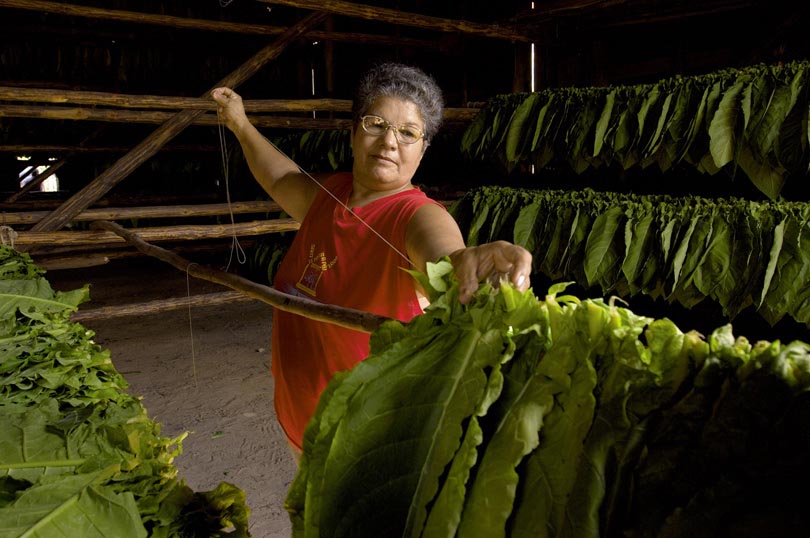
Some wrappers are cured in the farmers’ traditional Curing Barns (Casas de Tabaco) that depend entirely on the natural effects of the climate. The leaves are sewn in pairs and hung astride poles which are placed on racks in the barn. As the leaves cure, so the pole is raised progressively higher in the racks. Ventilation and light must be constantly adjusted to allow for natural variations in temperature and humidity. This process lasts for around 50 days.
2. Controlled Air Curing
The 1990’s saw a major investment in temperature and humidity control for the curing of wrapper leaves, to overcome the unpredictable conditions in a conventional barn. This is air curing at its most refined, with optimum conditions replicated around the clock. The time it takes is naturally less, around 25 days. But there is still the need for constant vigilance and adjustment as the condition of the leaf develops – the more so because the process now runs at full pace day and night.
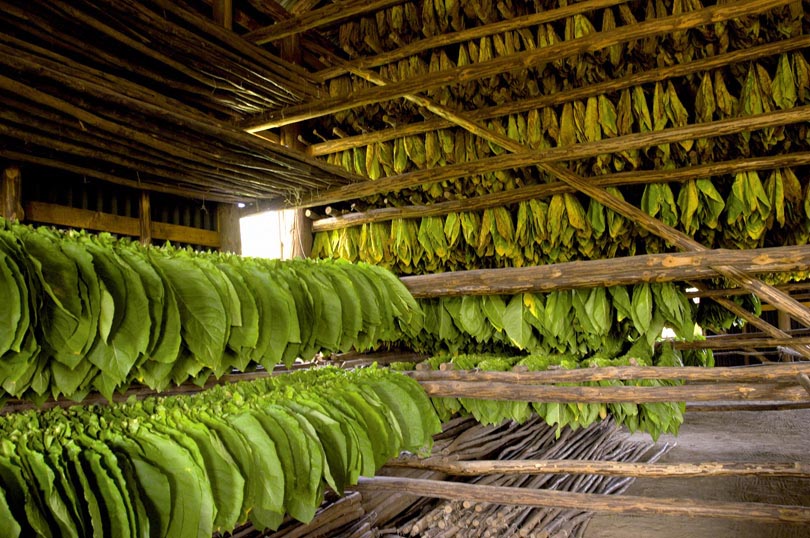
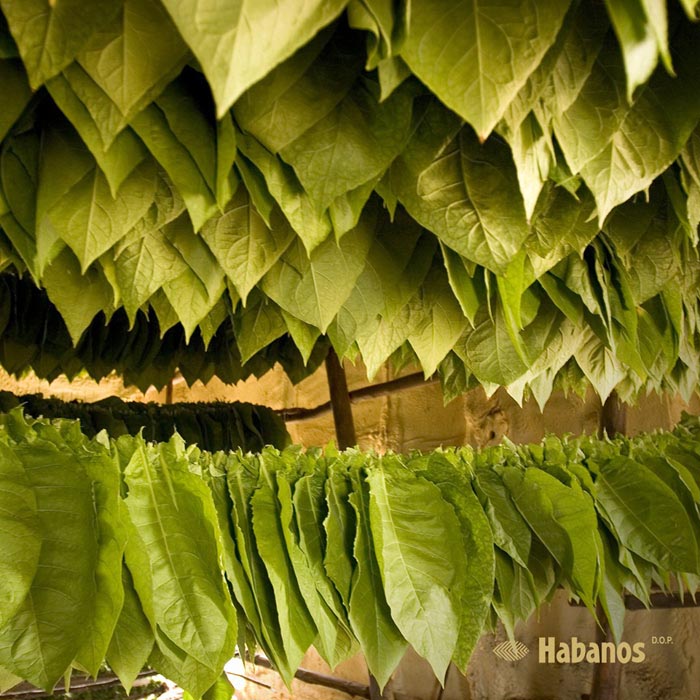
Fermentation of wrappers
Once the wrapper leaves are fully cured, they are removed from the poles and tied in sheaves called gavillas. This concludes the work of the farmer and the task passes into the hands of the Empresa de Acopio y Beneficio del Tabaco – the ‘organization for the gathering and improvement of tobacco’ – which buys the leaf from the farmer. The leaves are then taken to the Escogida, or Sorting House, where they will be fermented.
As shade-grown leaves are so thin and delicate, wrappers only undergo a single process of fermentation. It lasts for a minimum of 20 days and takes place in chambers at the Sorting House that have been specially designed for this purpose. During the fermentation the leaf’s impurities are eliminated and its acidity, tar and nicotine contents are reduced whilst its taste characteristics are accentuated. The fermentation also evens out the colour of the wrapper.
Following the fermentation, the wrappers stay in the Sorting House and pass to the process of sorting into classes or classification.
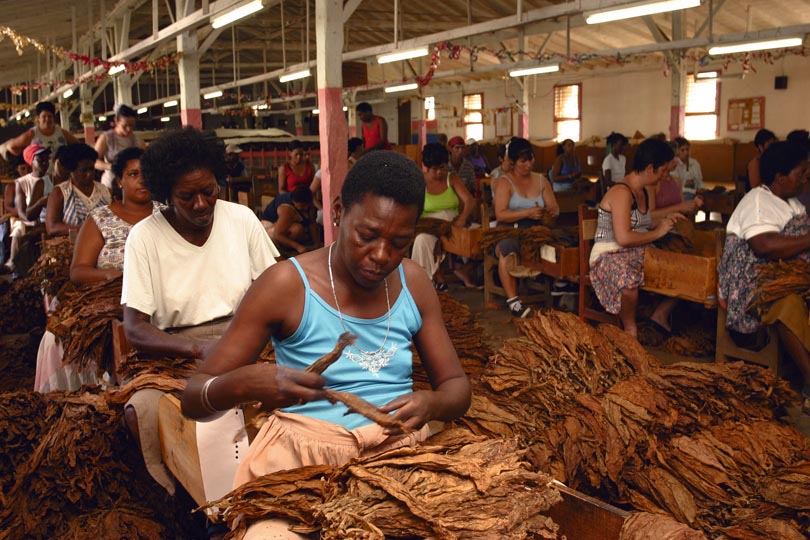
Sorting and classification of wrappers
Size, colour and texture are the three criteria that guide the sorters. Precious wrappers, as you might expect, are the subject of very close attention. First, they are moistened and aired to prepare them for handling. Then they are classified into a bewildering array of some 50 different categories designed to ensure that only the most perfect will ever dress a Habano. Any leaf below a certain standard is rejected and set aside for other purposes.
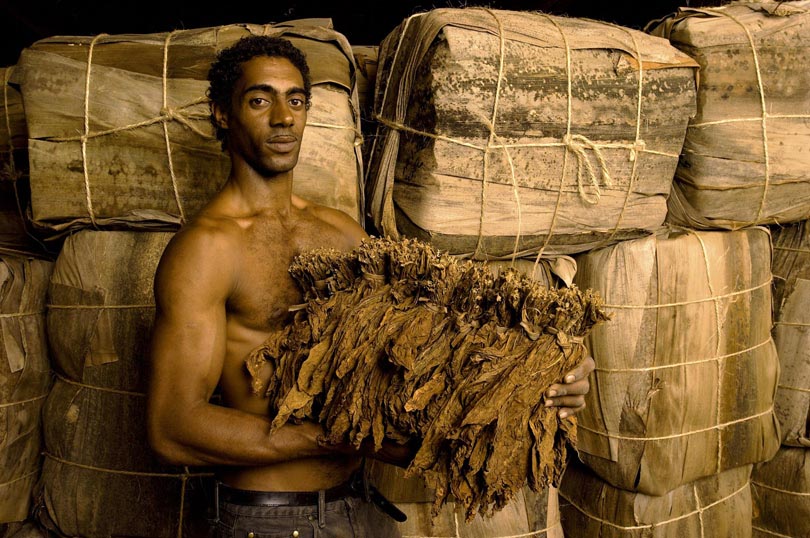
Baling and ageing of wrappers
After the wrappers have been sorted into classes, they are once again tied into gavillas (sheaves). The gavillas are then packed in bales known as tercios, made from yagua , which is the loose bark of the Royal Palm tree, a material used for many purposes in Cuba. Every bale carries a label rich with information about the leaves within it including their size, the year of harvest and the date of packing. Tercios are also marked with the code of the Escogida where the wrappers were sorted.
Finally, the tercios are transported to the warehouse where the wrappers will be left to age for a minimum of six months.

